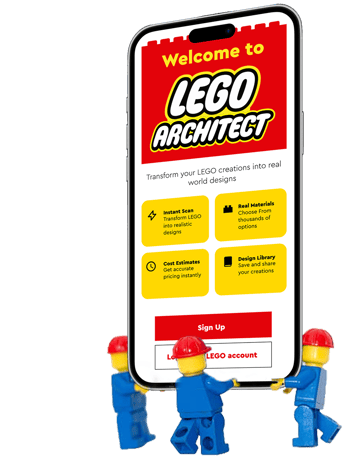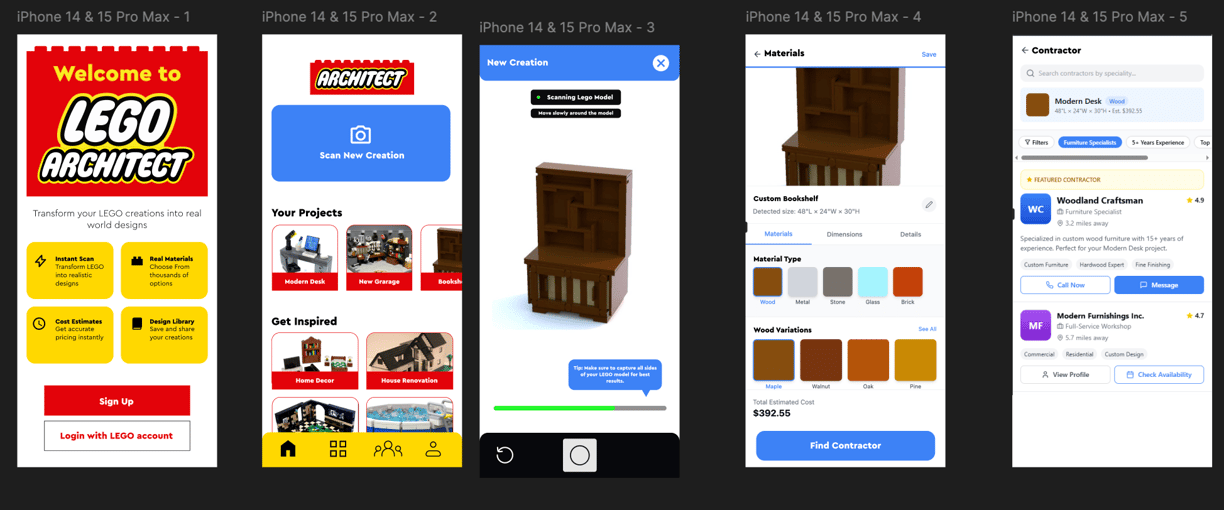
Lego Architect App
UX/UI
Project Overview
LEGO Architect is a fictional innovative mobile application that transforms physical LEGO constructions into realistic architectural designs with real-world materials and cost estimates. The project represents a strategic brand extension for LEGO, expanding from childhood toys into practical adult creative tools while maintaining the company's core values of creativity and building.
Modern consumers desire custom-designed furniture and architectural elements but face significant barriers in the design process. Professional design services are expensive ($150-300/hour), CAD software has steep learning curves, and existing solutions fail to bridge the gap between ideation and implementation.


Core Concept
Transform LEGO from a toy into a professional prototyping tool by creating a seamless physical-to-digital workflow that maintains the intuitive joy of building while delivering practical results.
The Challenge



Pitch Deck
While LEGO Architect represents a unique opportunity to transform a beloved childhood toy into a powerful adult creative tool, the primary objective of this project was to explore how to effectively communicate a complex new product concept through strategic pitch deck design and presentation.
This project served as an exercise in translating innovative ideas into compelling narratives that resonate with diverse audiences, from technical teams to business stakeholders to potential users. The challenge wasn't just designing the app interface, but crafting a story that made the concept immediately understandable and emotionally engaging.
The pitch deck development process revealed how critical it is to sequence information strategically—starting with familiar problems, introducing the solution gradually, and building excitement through a logical progression of features and benefits. Each slide needed to stand alone while contributing to the larger narrative arc.
A Copy of the Pitch-deck for LEGO Architect can be found here
This project reinforced my understanding that successful product communication requires balancing multiple perspectives: the user's emotional journey, the business value proposition, and the technical feasibility. The most important skill demonstrated here wasn't just design thinking, but the ability to synthesize complex ideas into clear, compelling presentations that drive decision-making and buy-in.
The experience highlighted how pitch deck creation is itself a design discipline—requiring the same user-centered thinking, iterative refinement, and attention to visual hierarchy that we apply to product interfaces. In many ways, the pitch deck serves as the first user experience of any new product concept.